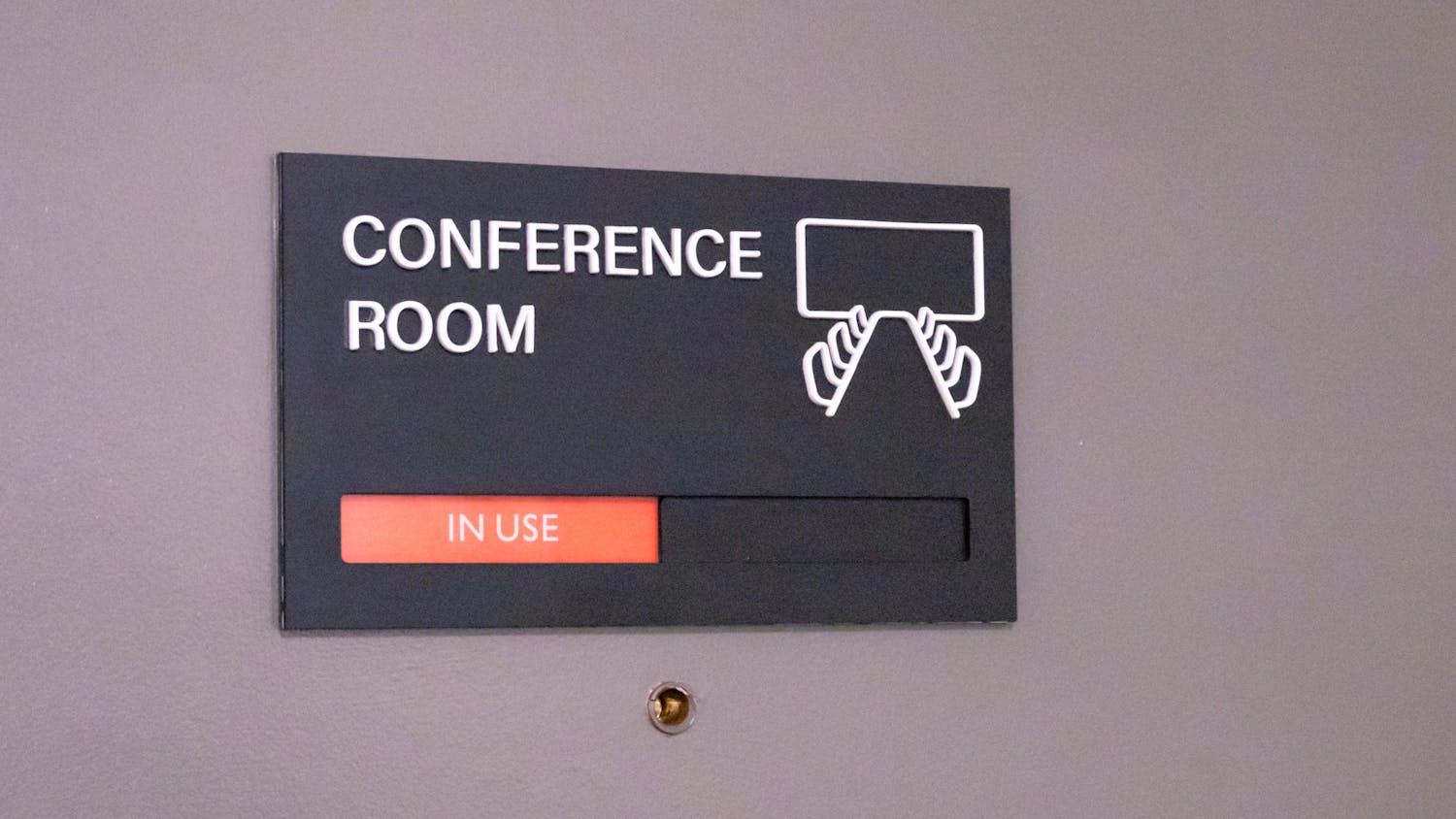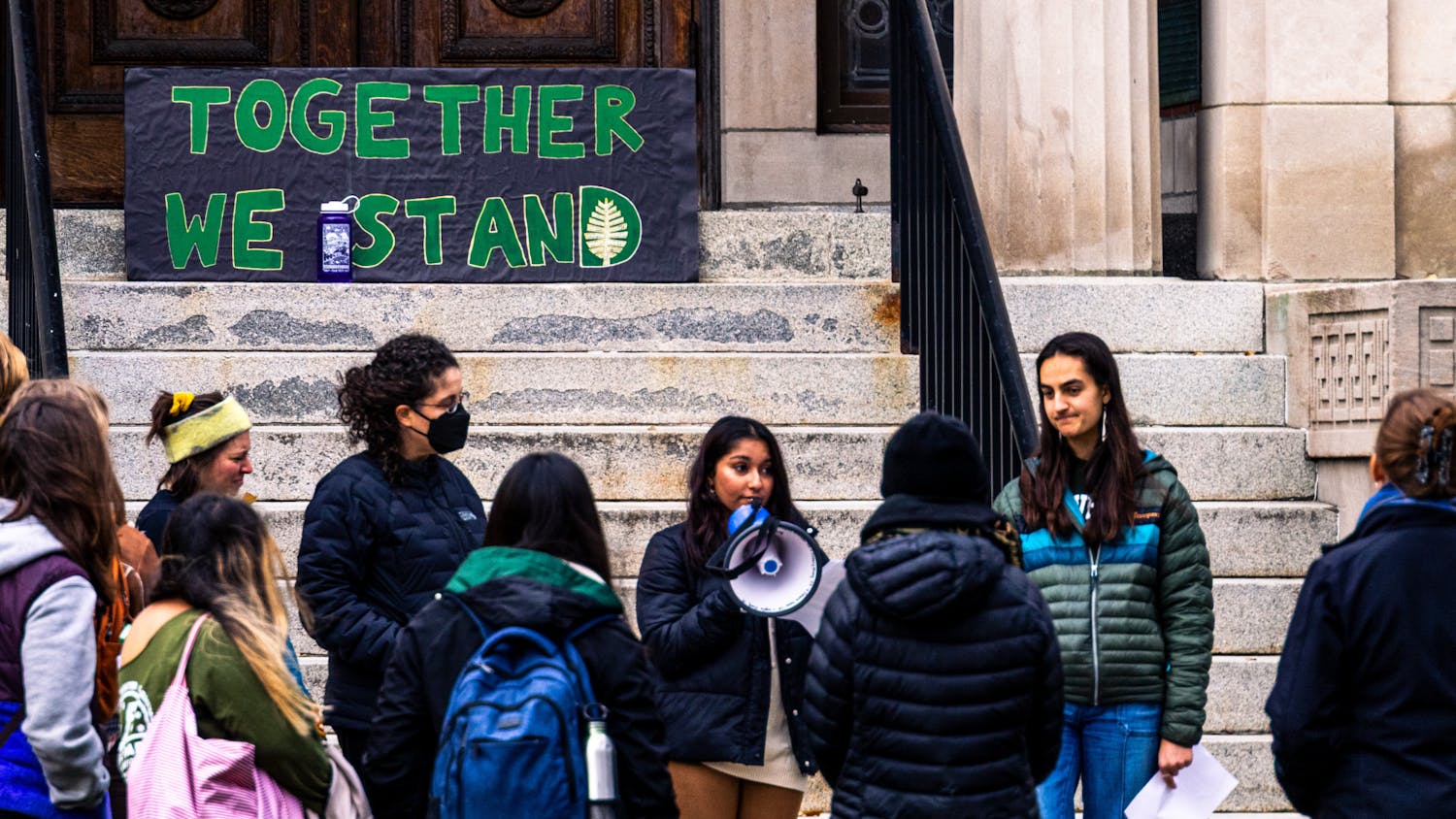The prevalence of blast injuries due to battlefield explosions has spurred new and innovative surgeries for rehabilitating soldiers, Dartmouth-Hitchcock Medical Center plastic surgeon Joseph Rosen said in a Veteran's Day lecture in Spanos Auditorium on Friday. Although wartime casualties have remained fairly constant in recent conflicts, the number of wartime injuries has increased, spurring advancements in war medicine, according to Rosen, who is also a professor at Dartmouth Medical School and an adjunct professor at the Thayer School of Engineering.
"Soldiers are coming back having lost both legs sometimes one arm and their face all in one injury," said Rosen, who has served as a U.S. Department of Defense consultant for the past 15 years.
The number of warfare casualties compared to warfare injuries demonstrates doctors' increasing ability to respond to war injuries, according to Rosen. While the number of wartime injuries has steadily increased, the number of deaths has remained relatively constant, he said.
"They're injuring us with more severe wounds, but we're keeping the number that die from these at the same level," Rosen said.
Rosen attributed the improvement in care to advancements in engineering medicine. Looking to the future, the fields of robotics, transplantation and regeneration must expand to adapt to the changing nature of modern warfare, he said.
"We have a new reconstructive ladder that we're envisioning for the 21st century," Rosen said. "The engineer needs to understand how robotics, transplantation and regenerative medicine are coming together."
To address the challenges associated with increased injury rates, the field of transplantation has begun to grow, and surgeons have performed over 40 limb transplants and 18 facial transplants, he said.
Facial transplants are hugely important to helping returning soldiers who suffer facial disfiguration from blast injuries, Rosen said.
"Someone goes to war accepting the fact that they may die they could accept the fact that they could lose a limb," he said. "But no one accepts the fact that they may come back disfigured, that they may lose a face."
Rosen showed audience members photographs of a patient who had suffered severe electrical burns before and after multiple facial reconstructions, eliciting gasps and murmurs of surprise from audience members.
"He's not beautiful, but he's gone from something that's almost not human to something that's human again," Rosen said.
Surgeons primarily use robotics to replace limbs, and current robotic arms can match the human arm in performance, he said. Robotic arms use motors and are controlled by already-existing arm muscles, he said.
Robotic arms work "very well" in about 55-60 percent of people, Rosen said. United States Army Col. Geoffrey Ling, who works at the Defense Advanced Research Projects Agency, hopes to design a robotic arm that will feature a normal cosmetic appearance, has a 24-hour battery life and can match human motor and sensory functions, Rosen said.
Robotic body parts are not perfect, however, as synthetic transplants can prove "very cumbersome" for patients missing limbs, Rosen said. Drawbacks to transplantation include the burden of immunotherapy and the lack of available donors, according to Rosen. Surgical advancements in regeneration may solve these problems, however, and several early burn repair projects have proven successful, he said.
"We put several million dollars into a rat so that we could grow an ear," Rosen said. "Right now, it's being done on a sheep. We have rats with ears on their backs. We have sheep with ears on their back. The next step after sheep is you."
Much of the advanced research is made possible by federal funding, since former President George W. Bush supported a $42.5 million regenerative medicine project at the Armed Forces Institute of Regenerative Medicine, according to Rosen, who serves as chief medical officer of the institute's Rutgers-Cleveland Clinic Consortium.
Despite these significant scientific gains, Rosen emphasized U.S. enemies' readiness to respond to the country's medical advancements.
"The enemy has over time created certain injuries that almost speak to the fact that they could have killed the soldier, but they didn't," he said. "They maimed them in a way that has a greater impact on us. They understand our culture better than we understand their culture."
Elana Folbe '15, who attended the lecture and shadows Rosen weekly through the Nathan Smith Pre-medical Society shadowing program, said she found Rosen's discussion of the political implications of new war medicine particularly interesting.
"Doing the surgery would make it easier for politicians to say we should go to war, because we have the technology to repair deformities," she said. "This could affect politics as well."
The lecture, titled "The New Face of War: Engineering Medicine for the Wounded Warrior in the 21st Century," was part of Thayer's Jones Seminars on Science, Technology and Society.



